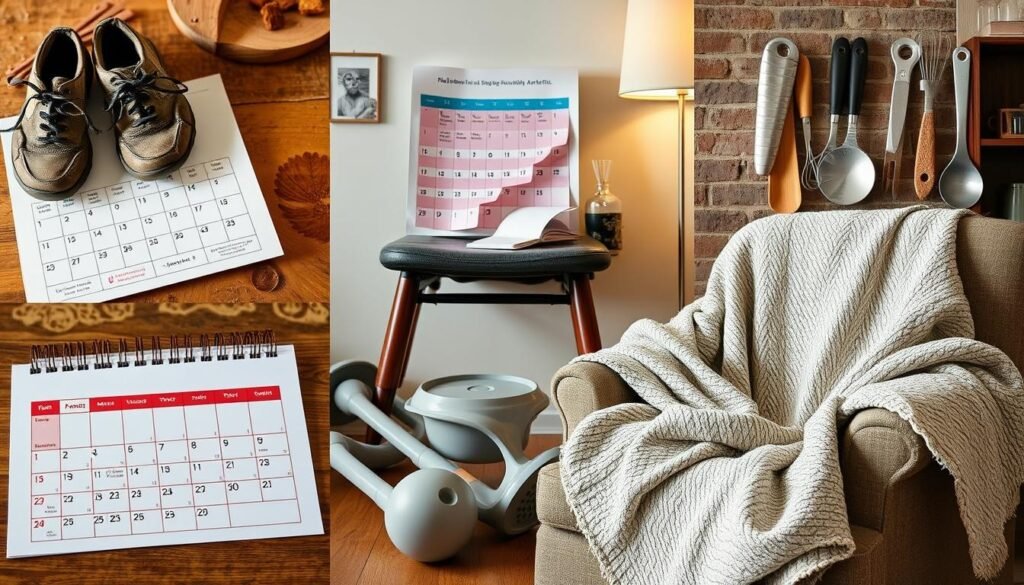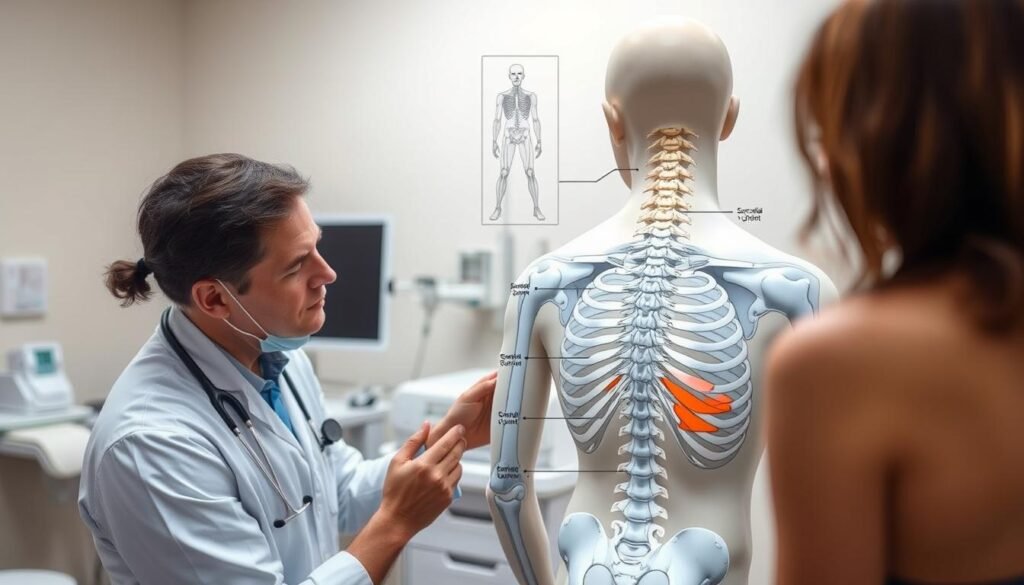Physical Address
304 North Cardinal St.
Dorchester Center, MA 02124
Physical Address
304 North Cardinal St.
Dorchester Center, MA 02124

Living with rheumatoid arthritis (RA) can be a daily challenge, impacting not just physical health but emotional well-being as well. This chronic autoimmune condition leads to persistent joint inflammation, resulting in pain and stiffness that can hinder even the simplest of tasks. However, successfully managing RA is not solely reliant on medication for rheumatoid arthritis; a multi-faceted approach can empower individuals to reclaim control over their lives.
In this article, we will explore practical tips and strategies that encompass both conventional treatments and holistic approaches to managing RA, alongside effective RA pain management techniques. By doing so, we aim to provide a comprehensive guide to improving daily living for those affected by this condition.
RA is a chronic condition that causes joint pain and stiffness. It leads to fatigue and unpredictable flares1. Managing RA means using medicine, changing your lifestyle, and taking care of yourself to stay independent and feel better.

Keeping a healthy weight is important when you have RA. Almost two-thirds of people with RA are overweight or obese. Being obese can make RA worse faster than being thinner12. Losing just 10 pounds can help manage RA symptoms2.
Doing regular physical activity is also crucial. Low-impact exercises like walking, cycling, and swimming help manage RA. They reduce inflammation, strengthen bones, and improve heart and lung health12.
Rheumatoid arthritis (RA) is a chronic disease that mainly affects the joints. It causes inflammation, pain, and stiffness. About 1% of the U.S. population has RA3.
More women than men get RA, with women being two to three times more likely to be affected43. RA usually starts in middle age, between 30-60. But, it can also affect younger and older people43.

Having a family member with RA increases your risk of getting it4. Interestingly, RA often improves in up to 80% of women during pregnancy3. Blood tests can show if you have RA by looking for certain antibodies4.
The most common symptoms of RA include pain and stiffness in the joints that last over a week. Squeezing the hands or feet can be tender. Morning stiffness can last more than 30 minutes.
Another symptom is limited joint motion. This is typical in RA.
People with RA often feel tired, have fever, and lose weight. These symptoms can make daily activities hard.
Living with RA is hard because of unpredictable flares. Flares are periods of increased joint inflammation that can last days or months4. Managing these flares requires medication, rest, and lifestyle changes.
Regular exercise can help with stiff and painful joints in RA patients3. Curcumin/turmeric and omega-3 fish oil supplements may also help with pain and stiffness4. In severe cases, surgery like joint replacement may be needed3.
It’s important to know about potential complications of RA. These include lung inflammation and scarring, leading to shortness of breath and lung disease4. RA can also cause heart muscle damage4. Working closely with a healthcare provider is key to managing RA symptoms and improving quality of life.
Working closely with your doctor is key to managing rheumatoid arthritis (RA). With over 1.5 million people in the U.S. affected, regular care and talking openly with your doctor are crucial5. People with RA usually see a rheumatologist every 2-3 months to check their condition and adjust treatment as needed5.

Regular visits to your rheumatologist are vital. They help track how the disease is progressing and if your treatment is working. More than 50% of RA patients see joint damage within two years of being diagnosed, making early and consistent care important5.
Your doctor might do blood tests to check inflammation markers like ESR or CRP levels. They might also test for rheumatoid factor and anti-CCP antibodies6. Imaging tests like X-rays, MRI, and ultrasound help assess joint damage and disease severity6.
Talking openly with your doctor is essential to find the right treatment for you. Almost all RA patients need medication to control the disease7. Your treatment options might include NSAIDs, corticosteroids, and DMARDs6.
Discuss any side effects of your medications with your doctor. Different treatments have different side effects, and you need to weigh the benefits and risks7. By keeping the lines of communication open, you and your doctor can find the best treatment plan for you.
| Medication Type | Examples | Potential Side Effects |
|---|---|---|
| NSAIDs | Ibuprofen, Naproxen | Gastrointestinal issues, heart problems |
| Corticosteroids | Prednisone | Weight gain, bone loss, diabetes |
| Conventional DMARDs | Methotrexate, Sulfasalazine | Liver damage, lung problems, nausea |
| Biologic DMARDs | Etanercept, Adalimumab | Increased infection risk, injection site reactions |
Your doctor might also suggest therapy to improve joint flexibility and daily tasks6. Occupational therapists can help 75-80% of RA patients improve function and quality of life5. Regular physical therapy can reduce pain and disability in 60-80% of patients5.
The initial treatment of RA aims to minimize inflammation as joint damage typically occurs within the first two years of diagnosis7.
By working closely with your healthcare team and following your treatment plan, you can manage your RA symptoms and improve your life. Remember to go to regular check-ups, talk about any concerns or side effects, and stay active in managing your RA.
Exercise is key in managing rheumatoid arthritis (RA), a chronic condition affecting 0.5–1% of the UK’s population. It’s more common in people over 40 and women. Yet, over 80% of RA patients worldwide, including 68% in the UK, are inactive8.
Regular exercise can lower risks like heart disease and diabetes. It also boosts mood and reduces anxiety9.
Low-impact activities like walking and swimming are easy on the joints. They improve heart health and flexibility. For RA patients, these exercises are especially helpful due to joint pain and muscle weakness8. Exercise for rheumatoid arthritis also prevents muscle loss, which affects two-thirds of RA patients8.

Stretching and flexibility exercises keep joints mobile and reduce stiffness. They’re crucial for RA patients, as the condition can cause joint deformities. Examples include gentle neck rolls and shoulder rotations.
Strength training builds muscle, which supports RA-affected joints. Proper exercise programs improve fitness and strength without harming joints8. High-intensity training boosts aerobic capacity and joint mobility in RA patients8.
Eighty percent of Americans view their physicians as their primary source of health information, emphasizing the role of healthcare providers in encouraging physical activity for individuals with arthritis.
Even short physical activity counseling sessions can increase activity levels. Over 50% of providers see an increase in activity9. A study found that 35% of patients would exercise if their doctor advised it9.
| Exercise Type | Benefits | Examples |
|---|---|---|
| Low-Impact Aerobic | Cardiovascular health, weight management, mood improvement | Walking, swimming, cycling |
| Stretching and Flexibility | Joint mobility, reduced stiffness | Gentle neck rolls, shoulder shrugs, wrist and ankle circles |
| Strength Training | Muscle mass maintenance, joint support | Resistance band exercises, bodyweight exercises |
Living with rheumatoid arthritis (RA) can make everyday tasks hard. But, adaptive equipment can make these tasks easier and reduce joint pain. This helps people with RA stay independent. About 1.3 million adults in the U.S. live with RA, and 80% face challenges in daily activities10.
Assistive devices can greatly help those with RA. A survey found 65% of people with RA use devices to help with daily tasks10. The market for RA adaptive equipment is expected to grow to $XX billion by 2025. Also, 92% of people with RA say adaptive equipment has improved their life quality10.
Dressing and grooming can be tough for those with RA. Tools like button hooks, long-handled shoehorns, and wide-handled brushes help. Zipper pulls, sock aids, and easy-to-use clothing also make dressing simpler. For grooming, electric toothbrushes and grooming seats offer comfort and ease11.

Adaptive kitchen tools make meal prep easier. Tools like electric can openers, jar openers, and lightweight cookware reduce hand and wrist strain. Other helpful items include:
These tools make cooking and food prep more accessible and fun for those with RA.
Creating an ergonomic environment at home and work helps those with RA. Adjustable chairs, keyboards, and desks help maintain good posture and reduce strain. Other ergonomic solutions include:
| Home | Work |
|---|---|
| Grab bars in the bathroom | Ergonomic mouse and keyboard |
| Raised toilet seats | Adjustable monitor stands |
| Long-handled sponges | Anti-fatigue mats |
| Tub benches and shower seats | Ergonomic office chairs |
Using theseergonomic solutions for RAcan greatly improve daily life and work productivity.
Full-service pharmacies and surgical supply stores have a wide range of adaptive equipment11. Getting help from occupational therapists can also guide on assistive devices and living modifications11. By using adaptive equipment, people with RA can stay independent and improve their life quality.
Managing rheumatoid arthritis (RA) means focusing on rest and relaxation for RA. About 80% of RA patients feel tired all the time, which makes daily tasks hard12. A good sleep schedule and a cozy sleep area can help you sleep better and handle RA symptoms13.
Short breaks during the day can also recharge your energy. Activities like reading, listening to music, or gentle yoga can help with RA stress14. Deep breathing and guided imagery can also lower pain over time13.

Managing stress is key to fighting RA fatigue. About 54.4% of myRAteam members struggle with stress from their condition14. Stress can make RA symptoms worse, causing more pain and inflammation14. To fight stress, try these techniques:
Doing things you enjoy and finding ways to relax can also help with stress and RA symptoms14. Always work with your doctor to manage your RA well, as this helps prevent stress from making symptoms worse14.
| Rest and Relaxation Technique | Benefits for RA Management |
|---|---|
| Establishing a consistent sleep schedule | Improves sleep quality and reduces fatigue |
| Taking short breaks throughout the day | Helps manage energy levels and reduces stress |
| Practicing mindfulness and meditation | Reduces pain levels and promotes relaxation |
| Engaging in enjoyable activities | Manages stress and improves overall well-being |
By focusing on rest and relaxation, you can manage your RA symptoms better. Taking care of yourself is vital for a good life with RA.
There’s no single diet for rheumatoid arthritis (RA), but an anti-inflammatory diet can help. About 1% of the world’s population has RA, which greatly affects their life quality and shortens their life expectancy15. The Western diet, rich in red meat, saturated fats, and refined carbs, increases RA risk16.
Adding certain foods and nutrients to your diet can reduce inflammation and manage RA symptoms. Try to include:

Dietary changes have shown significant benefits in relieving RA symptoms, slowing disease progression, and reducing damage15. Studies have shown a decrease in tender and swollen joints, pain, morning stiffness, and inflammatory markers after dietary changes15.
Adding anti-inflammatory foods to your diet can help manage RA symptoms. Some examples include:
| Food | Benefits |
|---|---|
| Fatty fish (salmon, sardines, mackerel) | High in omega-3 fatty acids |
| Colorful fruits and vegetables | Provide antioxidants and phytochemicals |
| Whole grains | May lower CRP levels and reduce heart disease risk |
| Legumes (peas, beans) | Good source of protein and antioxidants |
| Nuts (in moderation) | High in omega-3 fatty acids |
| Olive oil | Contains oleocanthal, which reduces inflammation |
Besides a balanced diet, some supplements can support joint health in RA patients. Always talk to your doctor before starting any new supplements. Consider these options:
“Let food be thy medicine and medicine be thy food.” – Hippocrates
By focusing on an anti-inflammatory diet and considering supplements for RA, you can actively manage your symptoms and improve your health. Always work with your healthcare provider to create a personalized plan that suits your needs and preferences.
Living with rheumatoid arthritis (RA) can be tough. It often brings constant pain, fatigue, and disability. It also adds to medical costs and can strain relationships and work life18. But, managing stress is key for RA patients. Chronic stress can make symptoms worse and reduce how well treatments work18.

Practicing relaxation, like yoga and meditation, for 15-20 minutes a day can help18. A study in February 2021 found that mindfulness helped RA patients feel less stressed and depressed19. Dr. Muller suggests yoga and breathwork to his patients, seeing their value in managing stress20.
Adding stress-reducing activities to your day can improve your health. Enjoying hobbies, being in nature, and doing moderate exercise like walking can help18. Having a routine that includes fun activities, like spending time with friends or pets, can also help manage stress19.
Connecting with others who have RA can be very helpful18. Being part of a community like Creaky Joints can offer stress relief20. Sharing experiences and strategies in support groups can also help19. Women often seek social support during stressful times, as they tend to “tend and befriend”20.
| Stress Management Technique | Benefits for RA Patients |
|---|---|
| Mindfulness and Meditation | Reduces depression, stress, and disease activity |
| Yoga and Breathwork | Relieves stress and improves physical well-being |
| Engaging in Hobbies and Nature | Alleviates stress and promotes relaxation |
| Joining Support Groups | Provides validation, shared experiences, and coping strategies |
Along with these techniques, living a healthy lifestyle is important for RA patients18. Eating well, sleeping enough, and managing thoughts can help. Seeking help for anxiety or depression and talking to loved ones about needs are also key18. By focusing on stress management and self-care, RA patients can live better lives and manage their condition more effectively.
Living with rheumatoid arthritis can make everyday tasks hard. But, by using energy-saving tips and making home changes, you can make your daily life easier. This helps reduce the strain on your joints.
Energy-saving strategies include planning, pacing, and prioritizing. They help avoid fatigue and joint stress. Break tasks into smaller steps and take breaks often to avoid getting too tired.
A study found that 58% of arthritis patients find breaking tasks into smaller parts helpful. Taking micro rests also helps a lot21.
Listening to music while doing chores can distract you from pain. 34% of arthritis patients find this helpful21. Doing chores you enjoy, like washing dishes in warm water, can also help 19% of patients21.
Focus on the most important tasks and ask others for help when needed. 27% of arthritis patients get help from family or roommates with chores21. It’s okay to not have a perfect house during flare-ups, as 41% of patients have learned21.
Using online shopping can save you from carrying heavy items. Cooking meals in advance helps manage days when symptoms are worse.
Home changes can make life easier and reduce joint pain. Add grab bars, lever handles, and raised toilet seats in bathrooms. In the kitchen, use ergonomic tools like electric can openers.
Lightweight mops and vacuum cleaners are recommended by 64% of arthritis patients21. Opt for lighter cleaning products like detergent pods. Using wheeled chairs to move laundry is a strategy used by 43% of patients21.
Minimizing stair use by having cleaning products on different floors is helpful for 36% of patients21. Replacing heavy items with lighter ones is a change made by 22% of patients21.
By using these energy-saving tips and making home changes, you can make your daily tasks easier. This reduces the disease’s impact on your life.
Managing rheumatoid arthritis (RA) requires a mix of medicine, lifestyle changes, and self-care. The disease’s prevalence varies worldwide. In some places, like Serbia and China, it’s less common. But in Japan and Argentina, it’s more common.
Working with your healthcare team is key. They can help you find the right treatment. This might include NSAIDs or DMARDs like methotrexate (MTX).
Staying active is important. Low-impact exercises, stretching, and strength training help keep joints flexible. Using adaptive equipment and ergonomic solutions makes daily tasks easier.
Rest is crucial for managing fatigue and flares. These can cause morning stiffness that lasts for hours. Eating anti-inflammatory foods and taking supplements can also help your joints.
Managing stress and finding support are important too. Techniques like deep breathing and meditation can help. Joining RA communities can offer emotional support.
By being proactive, you can live well with RA. This means keeping your independence and improving your quality of life. Remember, RA affects about 1% of the world’s population, more in women and in urban areas.
To manage rheumatoid arthritis pain, take your medications as directed. Do regular low-impact exercises. Use hot and cold therapy to help.
Practice relaxation techniques and use adaptive equipment to reduce joint stress.
To cope with RA flares, have a flare management plan ready. Keep a supply of medications handy. Know when to rest and pace yourself.
Use relaxation techniques to manage stress. Talk to your healthcare team about any symptom changes.
Low-impact exercises like walking, swimming, and tai chi are good for RA. They’re gentle on the joints and help reduce inflammation.
They improve strength, flexibility, and function. Include stretching, flexibility exercises, and strength training in your RA exercise program.
Simplify tasks by planning, pacing, prioritizing, and positioning. Break tasks into smaller steps and take breaks often.
Delegate tasks to family members or hire help when needed. Make home modifications for better accessibility.
There’s no specific diet for RA, but an anti-inflammatory eating plan can help. Eat omega-3-rich foods, colorful fruits and vegetables, whole grains, and healthy fats.
Limit saturated fats, processed foods, and added sugars. Consider supplements like fish oil, vitamin D, and glucosamine for joint health, but talk to your doctor first.
Stress management is key for coping with RA. Practice relaxation techniques like deep breathing, progressive muscle relaxation, and mindfulness meditation.
Join local or online RA support groups to connect with others. Engage in stress-reducing activities like hobbies, spending time in nature, or journaling.